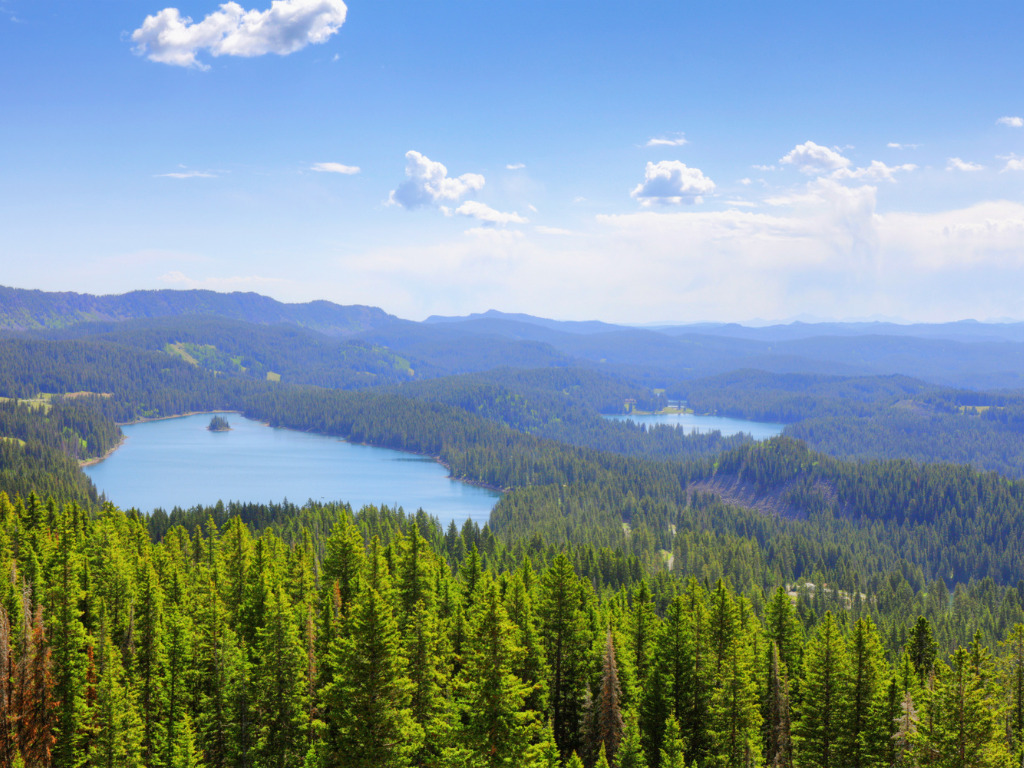Current work in wildlife, rivers, public lands, and climate
Press Releases
Forest Service proposes unprecedented logging of mature and old-growth forests in western Colorado
“A sizeable area of our beloved forests could be sacrificed to commercial logging at the expense of our already dwindling wilderness areas, wildlife habitat and recreation,” said Chad Reich with High Country Conservation Advocates. “Outdoor recreation is a far larger economic driver for our communities than the local timber industry that benefits from cutting these forests. The Forest Service would’ve known that if it had conducted an economic analysis, as required by law.”
Under the proposed plan mature and old-growth forests, which store massive amounts of carbon, could be commercially logged. Forest managers would not be required to identify and protect old-growth and mature trees. Steep slopes across the forests, including Upper Taylor Canyon and Slate River Valley, could also logged despite the high risk of severe erosion and threats to water quality.
“The proposed plan directly violates federal policy on protecting mature and old-growth trees as a cornerstone of U.S. climate action,” said Alison Gallensky, conservation geographer with Rocky Mountain Wild. “The Grand Mesa, Uncompahgre and Gunnison national forests boast the highest carbon sequestration capacity of any national forest in the Rocky Mountain region. Despite this the Forest Service has failed to ensure these vital carbon sinks aren’t logged and sold.”
Objections also challenged the Forest Service’s failure to take urgently needed climate action by prohibiting new coal leasing in the plan.
Delta County, home of the national forests’ headquarters, has already warmed 3.9 degrees Fahrenheit over the last 125 years driven by human-caused climate change.
“Instead of providing real climate solutions and finally putting an end to coal leasing, it’s business as usual under this disastrous forest-clearing plan,” said Allison Henderson, Southern Rockies director at the Center for Biological Diversity. “Our wildlife, water, forests and communities are already suffering the consequences of the climate emergency. The Forest Service must address the existential threat of human-caused climate change and preserve our remaining national forests rather than selling them to the highest bidder.”
The Forest Service recommended adding only 46,200 acres of new wilderness area in the final plan. The community’s conservation proposal had called for more than 324,000 acres of new wilderness lands. In addition, the Gunnison Public Lands Initiative offered a broadly supported proposal for new wilderness and special management areas in Gunnison County that was mostly excluded.
“The proposed plan largely ignores local input by recommending only a small fraction of viable lands as wilderness, completely ignoring the support of local communities and deserving wilderness quality lands across these forests,” said Jim Ramey, Colorado state director at The Wilderness Society. “This is particularly disappointing in Gunnison County, where the community came together over a multi-year, consensus-based stakeholder process to recommend areas for wilderness and special management designation through the Gunnison Public Lands Initiative, which the Forest Service mostly neglected.”
“Community members proposed special management area designations to protect pristine forestlands in the North Fork Valley from logging and oil and gas drilling,” said Peter Hart, legal director at Wilderness Workshop. “The Forest Service ignored those proposals and chose not to protect those areas in the new plan.”
The groups also raised concerns about the plan’s failure to address the myriad needs of plants and animals that depend on the forests.
“Over 20 years ago Colorado Parks and Wildlife reintroduced Canada lynx to the San Juan Mountains,” said Rocky Smith, a long-time forest management analyst. “This is a great source of pride for wildlife lovers in this state. Lynx are federally threatened and depend on mature forests with large trees. This plan allows for logging that could easily degrade or destroy much of the best habitat for lynx and their main prey, snowshoe hares, and undermine Colorado’s hard work to reestablish and maintain a viable lynx population.”
The Grand Mesa, Uncompahgre and Gunnison national forests also provide habitat for the iconic bighorn sheep and lesser-known species like the Grand Junction milkvetch and the Tundra buttercup. These species, among others, need special designation the Forest Service grants to plants and animals when there is concern about their ability to survive in the area. Many struggling plants and animals were left off the list in the proposed final plan.
“Without the species of conservation concern designation the Forest Service has no obligation to make sure the plants and animals continue to exist locally,” said Chris Krupp, public lands attorney with WildEarth Guardians. “In many cases, the agency decided not to designate wildlife, plants or fish merely because it had no data on their population trends. Without species of conservation concern designation, the number of bighorn sheep on the GMUG could dwindle down to almost nothing and the agency wouldn’t have to do anything about it.”
Other conservation groups submitting objections include the Colorado Native Plant Society, Western Slope Conservation Center, San Juan Citizens Alliance, the Grand Junction and San Juan Broadbands of the Great Old Broads for Wilderness, Western Watershed Project, Defenders of Wildlife, Western Colorado Alliance, Sheep Mountain Alliance, the Black Canyon Audubon Society, and Robin Nicholoff.
Gunnison, Ouray and San Miguel counties and Colorado Parks and Wildlife also submitted objections.
The Forest Service now has about 90 days to review objections and make any additional changes to the final plan.

Grand Mesa, Grand Mesa National Forest, Colorado (Getty Images)
###